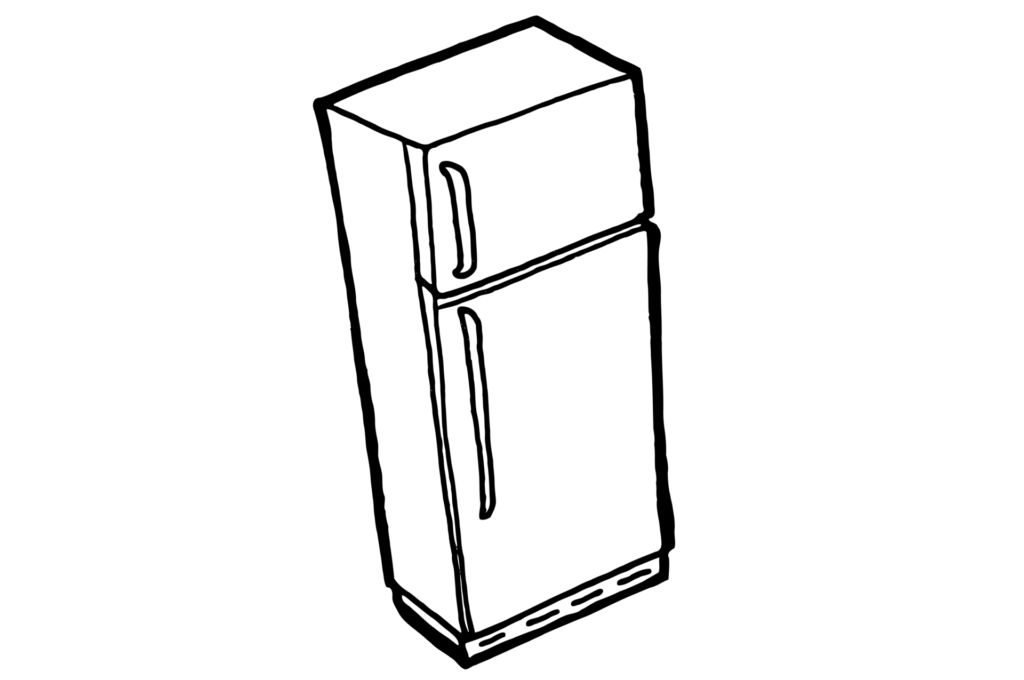By MSH Program Manager, Annie Henry
Do the refrigerants in your appliances play a role in the climate crisis?!
It’s June 26th, and you know what that means..it’s World Refrigeration Day! Established in 2019, this awareness campaign was created to celebrate the increasingly important role that the refrigeration industry, and related technologies, play in our modern world. In honor of World Refrigeration Day, we’ll be looking at refrigeration through a sustainability lens and discuss the impact refrigerants have on climate change.
Refrigerants are used in many sectors of our society, from commercial refrigeration systems to household appliances. When emitted—whether it be during the production process, from leakages, or disposal—refrigerants have a damaging effect on our planet’s atmosphere and contribute to climate change. Though there are various classes of refrigerants, today we’ll be focusing on Hydrofluorocarbons (HFCs).
Stay tuned until the end of the article to discover actions you can take to reduce your role in HFC emissions, which includes a refrigerator buying guide!
What Are HFCs?
Hydrofluorocarbons (HFCs) are a group of synthetic, man-made greenhouse gases. Unlike most other greenhouse gases that are waste-products of human and natural activity, HFCs are intentionally produced for use in refrigeration, air conditioning, insulating foams, aerosols, and more. They became widely used starting in the late 1980s as an alternative to other ozone-depleting refrigerants and substances. Although HFCs hold little to negligible potential to deplete our planet’s ozone layer, they are very potent greenhouse gases. Whereas other greenhouse gases are known for being emitted from day-to-day human activity, HFCs are contained within equipment such as air conditioners and heat pumps. Their emission results from the poor maintenance or wear of such equipment, and from leakage at the end of equipment’s life.
HFCs Impact on Climate Change – Why They Matter
If you are aware of the science behind climate change, you’ve likely heard much about carbon dioxide and methane. HFCs are among the lesser-known greenhouse gases and account for only about 1% of total global greenhouse gas emissions. Unlike other greenhouse gases that remain in the atmosphere for a frighteningly long time, HFCs remain in the atmosphere for a relatively shorter amount of time; HFCs have a lifetime between 15 and 29 years, whereas carbon dioxide (CO2) has a lifetime between 300 and 1000 years. [1]
You may be thinking, they don’t seem that bad. Shouldn’t we be focusing our efforts on more prominent greenhouse gases?? Although their abundance and lifetime is low compared to other greenhouse gases, they are extremely potent, much more so than carbon gases. The five most often used HFCs are between 150 and 5,000 times more potent than CO2.[5] The most common HFC is about 3,790 times more damaging to the climate over a 20 year period than CO2.[1] So although less common, they are still a big deal!
In addition to being very potent, HFC emissions are expected to increase exponentially in upcoming decades. Because HFCs have only been commercialized since the late 1980s, their abundance in the atmosphere is relatively small compared to other greenhouse gases. However, they should not be overlooked, as they are among the fastest growing greenhouse gases; HFC emissions are growing at a startling rate of about 10% to 15% per year.[1] This is largely due to the increasing demand for equipment related to refrigeration and air conditioning.
Reducing HFCs – What Can YOU Do?
Reducing and replacing the use of HFC refrigerants is a key step in mitigating our continued impact on the climate and reaching important greenhouse gas emission reduction goals. For example, replacing HFCs with low/non greenhouse gas emitting alternatives could avoid 0.1°C of global warming by 2050. Considering HFCs only make up 1% of our global greenhouse gas emissions, such potential reduction is impressive.[1]
Reducing the presence of HFCs comes from effective refrigerant management, involving lowering the demand and usage of related appliances, replacing refrigerants with non-HFC substances (or low-impact HFCs), controlling leakages, increasing refrigeration efficiency, and improving disposal and destruction of refrigerants at the end of a product’s life.[4]
So where do you, the average consumer, come into play with HFC reduction?
When it comes to individual climate action, evaluating and changing out your appliances—including refrigerators, air conditioners, and heat pumps—for those that use more climate-friendly refrigerants. Because refrigerants often emit harmful greenhouse gases upon the disposal of such appliances, make sure you are disposing of or recycling your appliances in a proper manner. When it comes time to replace such appliances, opt for one that uses HFC-free refrigerants. Though this may require a bit of research before purchasing, it can have a positive impact on helping reduce HFC emissions. While you’re at it, also aim for HFC-free appliances that are energy efficient!
To start you off on your HFC-free appliance journey, here is a HFC-free Refrigerator Buyer Guide.
Resources
[1]Climate & Clean Air Coalition – https://www.ccacoalition.org/en/slcps/hydrofluorocarbons-hfcs
[2]US Environmental Protection Agency – https://www.epa.gov/rad/consumes
[3]Environmental Investigation Agency – https://eia-global.org/campaigns/Climate/what-are-hydrofluorocarbons
https://eia-global.org/reports/20200625-hfc-free-refrigerator-list
[4]Project Drawdown – https://drawdown.org/solutions/refrigerant-management/technical-summary
[5]National Institute for Public Health and the Environment – https://www.rivm.nl/en/hydrofluorocarbons/contribution-of-hfcs-to-greenhouse-effect

